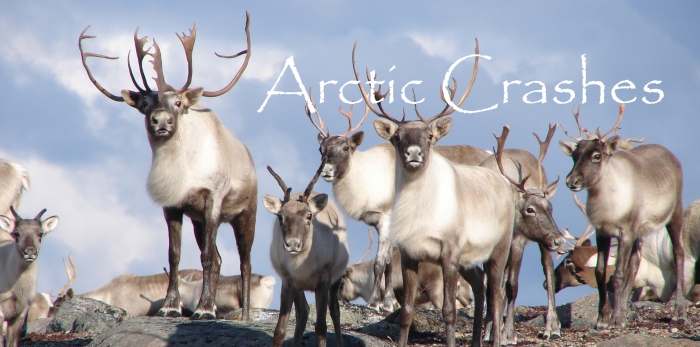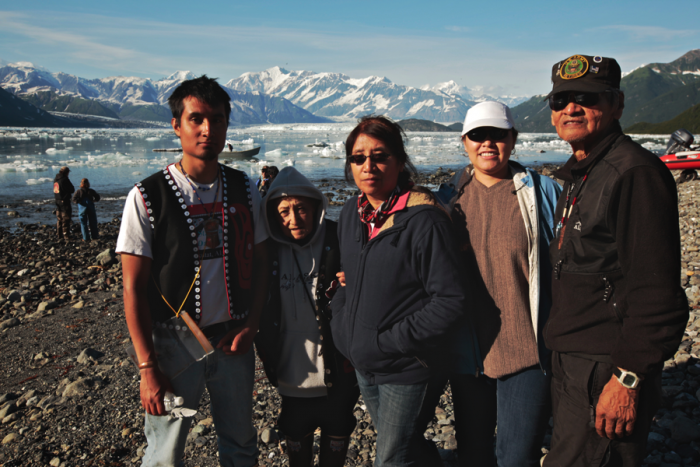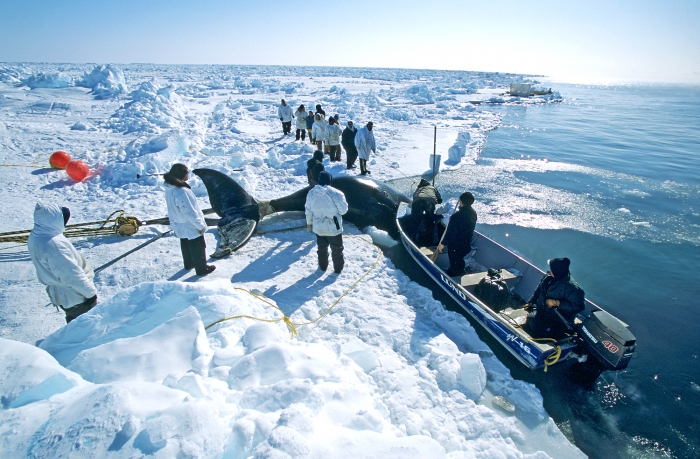
Note: "Witness the Arctic" regularly features the research and related programs of ARCUS member institutions. This article spotlights the Smithsonian's Arctic Studies Center, which is part of the Department of Anthropology in the National Museum of Natural History, a section of the Smithsonian Institution.
The Arctic Studies Center was established in 1988 with a mandate from Congress to study northern cultures, peoples and environments, and promote interest in the north—with a special focus on northern cultural research and education. During the past 27 years the Center has developed a wide range of programs, including anthropological studies of circumpolar cultures from ancient times to the modern day; collections and preservations of artifacts, photographs, and art; distribution of information through publications, exhibitions and electronic media; and training of northern peoples in anthropology and museum studies.
Originally directed at Alaska, where the Smithsonian research and collecting began in the 1860s, and in Labrador, where the Smithsonian has been active since 1970, Arctic Studies Center programs are now conducted throughout the circumpolar and northern regions from Siberia to Scandinavia, Alaska, and Newfoundland. The Center seeks to bring Arctic Studies Center researchers together with community scholars in the collaborative exploration of the cultural heritage represented in the Smithsonian's anthropology collections from Arctic and sub-Arctic regions.
Over the years, the Arctic Studies Center's resources and partnerships have resulted in many innovative programs and projects. Community-based archaeology and history, collaborative exhibit development, knowledge repatriation, and indigenous interpretation of museum collections all form part of an integrated approach to shared discovery and learning. The Arctic Studies Center is currently involved in producing numerous publication and media projects, including the launch of its own publication series titled Contributions to Circumpolar Anthropology. The Arctic Studies Center also participates in several education programs, seminars, conferences, and symposiums with the public and native communities. Thanks to these efforts, the Arctic Studies Center is bringing the Smithsonian's collections and research out of "the nation's attic" and introducing them to audiences around the globe.
Recent Events, Research, Exhibits, and Resources
The Smithsonian's National Museum of Natural History hosted the Arctic Spring Festival celebrating Arctic peoples, cultures, and sciences from 8-10 May 2015 to mark the United States' 2015–2017 chairmanship of the Arctic Council. The museum encouraged visitors to learn more about the Arctic through a variety of activities including demonstrations from Arctic nations, research agencies and organizations; workshops; games; and musical and dance performances.

Arctic Studies Center featured research project "Arctic Crashes" is a collaborative study of polar animal fluctuations. Image courtesy of the Arctic Studies Center. The Arctic Crashes research program is a collaboration with Arctic anthropologists, biologists, and indigenous experts to explore the roles of human agency, climate, and habitat change in historical collapses ('crashes') of marine and terrestrial animal populations. The Arctic makes a compelling case for assessing the role of multiple players in biological resource sustainability, particularly during the Anthropocene era. The Yakutat Seal Camps Project (http://www.mnh.si.edu/arctic/html/Yakutat-seal-camps/), sponsored by the National Science Foundation, is multi-disciplinary study of 900 years of interaction between people, seals, and glaciers at Yakutat Bay Alaska. It addresses the ancient, historical, and contemporary harvest of harbor seals at ice-floe pupping grounds near Hubbard Glacier in the context of Holocene climate change.

Yakutat Seal Camps Project community researchers, the Ramos-Abraham family, at Yakutat Bay, Alaska. Photograph by Brandon McElroy, image courtesy of the Arctic Studies Center. The Arctic Studies Center's Living Our Cultures exhibition at the Anchorage Museum features the Smithsonian's extensive collection of Alaska Native objects combined with interactive media to present masterworks in the context of the peoples' lives today. The associated Sharing Knowledge Alaska website and Living Our Cultures playlist on YouTube present some of the many programs conducted by the Arctic Studies Center Alaska to highlight contemporary indigenous arts, cultures, and languages.

The art, ceremony, and spiritual beliefs associated with whaling traditions are explored in the online exhibit "Sharing Knowledge." Image courtesy of the Arctic Studies Center. The Center's website features links to a wide range of web-based exhibitions, ongoing research, publications, and resources available to the public.
The Arctic Studies Center has its main office in the National Museum of Natural History in Washington, D.C. and cooperates closely with the Smithsonian's National Museum of the American Indian. The Alaska Office of the Arctic Studies Center is located at the Anchorage Museum of History and Art, with whom they have a longstanding cooperative agreement.
For more information about the Arctic Studies Center, please visit the Center's website.
Or, contact the Director of the Arctic Studies Center, William Fitzhugh (Fitzhugh [at] si.edu) or Aron Crowell in the Alaska office (crowella [at] si.edu).
